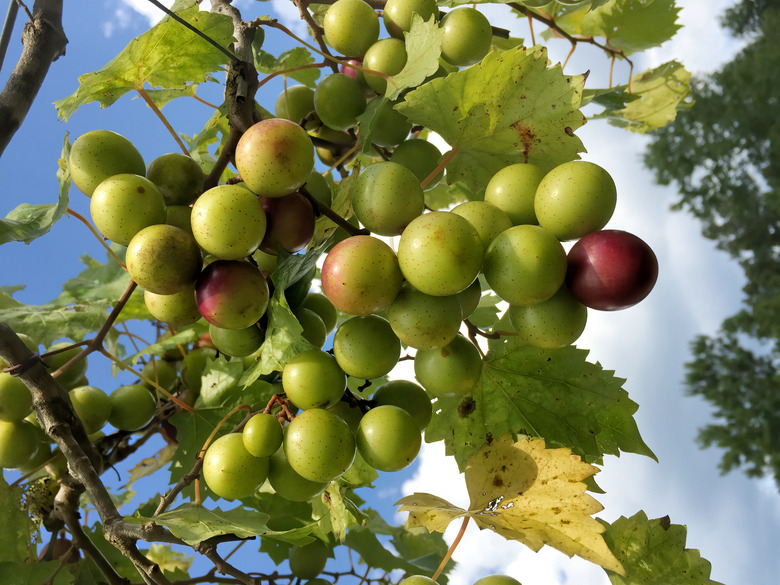How To Grow Muscadine Grapes From Seed
We may receive a commission on purchases made from links.
Muscadine grapes are large grapes that grow in small clusters across the American Southwest. Muscadine grapes prefer sunny, well-drained soils of USDA hardiness zones 6 through 9. Within one of these hardiness zones you can plant muscadine grapes successfully in your garden or orchard via grapevines or seeds.
Meet the Muscadine Grape
Meet the Muscadine Grape
Muscadine grapes (Muscadinia rotundifolia, formerly Vitis rotundifolia) are a delicious and relatively common varietal of grapes that boast a surprising number of health benefits, thanks to their rich nutrient content. They are large, dark, thick-skinned grapes that are native to this country, growing in the wild in the southeastern states from the Atlantic coast through Texas.
Muscadines have been cultivated for many years, starting with the Native Americans who used the grapes for juicing and drying. Early European settlers made wine from the juice. Today the grapes are also used to make artisanal jams and jellies. Green and bronze-colored muscadines are known as scuppernong.
Understand Muscadine Health Benefits
Understand Muscadine Health Benefits
Muscadine grapes have recently been in the spotlight as health foods as well. Their tough skin and edible seeds contain a large number of polyphenols, compounds that, in natural and traditional medicine practice, are said to have powerful antioxidant effects that boost overall health. Several studies have found that muscadine grapes do have metabolic and cardiovascular benefits, as well as antioxidant effects.
In addition, muscadine grapes have a very high amount of fiber content for a grape, some 5 times the fiber of a seedless grape. This is because of the insoluble fiber found in the skins and seeds of the grape that promotes bowel regularity and eliminates digestive issues. However, the skins of muscadine grapes can be hard to chew and lend a slightly bitter taste to the fruit, so some people prefer to avoid them.
Grow Muscadine Grapes
Grow Muscadine Grapes
Most people who grow muscadine grapes buy and plant grape vine shrubs that are available in commerce. The preference among growers is for 1-year-old container-grown plants, which are hardier than bare root plants and can be planted in any season as long as water for irrigation is available. Bare root vines should be set in February or March.
Growing muscadine grapes from seed first requires you to seed the grapes. Fresh seeds must be placed in the refrigerator for three to four months before planting. Or you can skip this step and buy grape seeds instead. Note that grape seeds are somewhat picky to grow and are not likely to grow grapes that are identical to a parent variety.
Germinate your grape seeds in sterile seed-starting mix that has been premoistened in small pots or together in trays with ample drainage holes. Plant each seed three times as deep as its length, spacing them 2 inches apart. Place them where they will get 16 hours of light a day. Keep the seed-starting soil damp but not wet.
You may have to wait for two months or more for germination. As seedlings grow, transplant them into larger pots. Wait until a plant is a foot tall before planting it in the garden.
